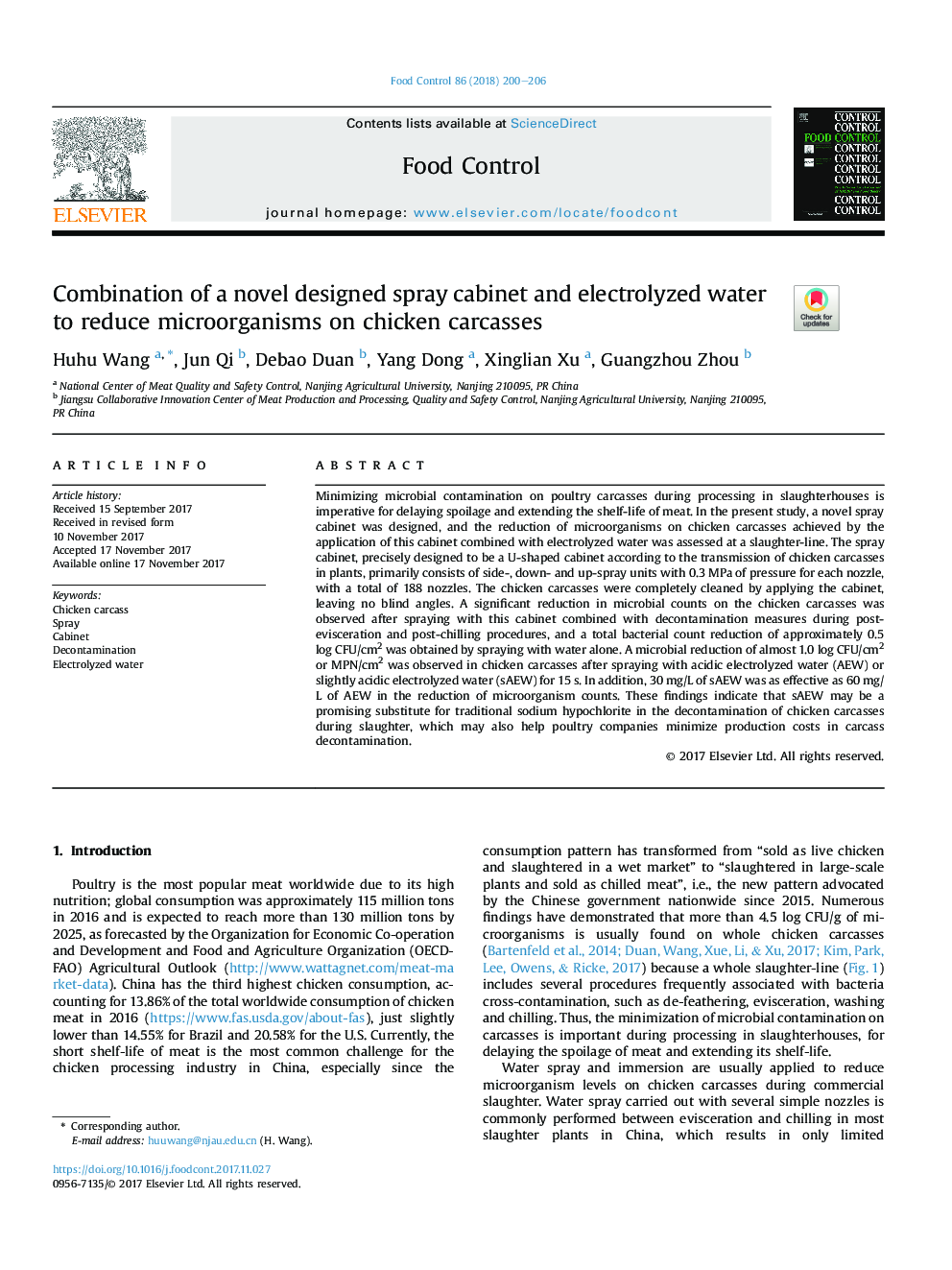| Article ID | Journal | Published Year | Pages | File Type |
|---|---|---|---|---|
| 8888151 | Food Control | 2018 | 7 Pages |
Abstract
Minimizing microbial contamination on poultry carcasses during processing in slaughterhouses is imperative for delaying spoilage and extending the shelf-life of meat. In the present study, a novel spray cabinet was designed, and the reduction of microorganisms on chicken carcasses achieved by the application of this cabinet combined with electrolyzed water was assessed at a slaughter-line. The spray cabinet, precisely designed to be a U-shaped cabinet according to the transmission of chicken carcasses in plants, primarily consists of side-, down- and up-spray units with 0.3Â MPa of pressure for each nozzle, with a total of 188 nozzles. The chicken carcasses were completely cleaned by applying the cabinet, leaving no blind angles. A significant reduction in microbial counts on the chicken carcasses was observed after spraying with this cabinet combined with decontamination measures during post-evisceration and post-chilling procedures, and a total bacterial count reduction of approximately 0.5 log CFU/cm2 was obtained by spraying with water alone. A microbial reduction of almost 1.0 log CFU/cm2 or MPN/cm2 was observed in chicken carcasses after spraying with acidic electrolyzed water (AEW) or slightly acidic electrolyzed water (sAEW) for 15Â s. In addition, 30Â mg/L of sAEW was as effective as 60Â mg/L of AEW in the reduction of microorganism counts. These findings indicate that sAEW may be a promising substitute for traditional sodium hypochlorite in the decontamination of chicken carcasses during slaughter, which may also help poultry companies minimize production costs in carcass decontamination.
Related Topics
Life Sciences
Agricultural and Biological Sciences
Food Science
Authors
Huhu Wang, Jun Qi, Debao Duan, Yang Dong, Xinglian Xu, Guangzhou Zhou,
